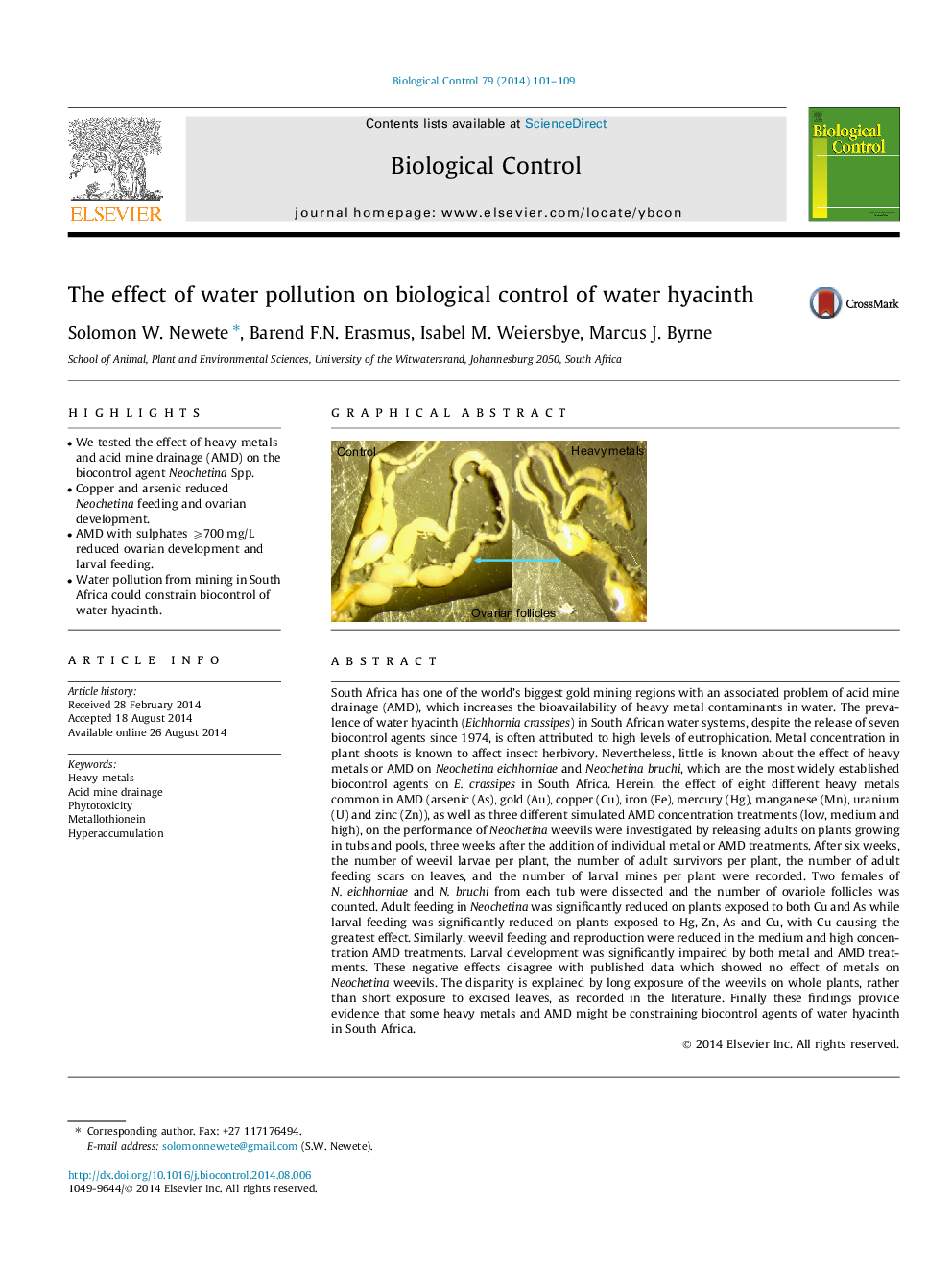| کد مقاله | کد نشریه | سال انتشار | مقاله انگلیسی | نسخه تمام متن |
|---|---|---|---|---|
| 4503841 | 1624255 | 2014 | 9 صفحه PDF | دانلود رایگان |
• We tested the effect of heavy metals and acid mine drainage (AMD) on the biocontrol agent Neochetina Spp.
• Copper and arsenic reduced Neochetina feeding and ovarian development.
• AMD with sulphates ⩾700 mg/L reduced ovarian development and larval feeding.
• Water pollution from mining in South Africa could constrain biocontrol of water hyacinth.
South Africa has one of the world’s biggest gold mining regions with an associated problem of acid mine drainage (AMD), which increases the bioavailability of heavy metal contaminants in water. The prevalence of water hyacinth (Eichhornia crassipes) in South African water systems, despite the release of seven biocontrol agents since 1974, is often attributed to high levels of eutrophication. Metal concentration in plant shoots is known to affect insect herbivory. Nevertheless, little is known about the effect of heavy metals or AMD on Neochetina eichhorniae and Neochetina bruchi, which are the most widely established biocontrol agents on E. crassipes in South Africa. Herein, the effect of eight different heavy metals common in AMD (arsenic (As), gold (Au), copper (Cu), iron (Fe), mercury (Hg), manganese (Mn), uranium (U) and zinc (Zn)), as well as three different simulated AMD concentration treatments (low, medium and high), on the performance of Neochetina weevils were investigated by releasing adults on plants growing in tubs and pools, three weeks after the addition of individual metal or AMD treatments. After six weeks, the number of weevil larvae per plant, the number of adult survivors per plant, the number of adult feeding scars on leaves, and the number of larval mines per plant were recorded. Two females of N. eichhorniae and N. bruchi from each tub were dissected and the number of ovariole follicles was counted. Adult feeding in Neochetina was significantly reduced on plants exposed to both Cu and As while larval feeding was significantly reduced on plants exposed to Hg, Zn, As and Cu, with Cu causing the greatest effect. Similarly, weevil feeding and reproduction were reduced in the medium and high concentration AMD treatments. Larval development was significantly impaired by both metal and AMD treatments. These negative effects disagree with published data which showed no effect of metals on Neochetina weevils. The disparity is explained by long exposure of the weevils on whole plants, rather than short exposure to excised leaves, as recorded in the literature. Finally these findings provide evidence that some heavy metals and AMD might be constraining biocontrol agents of water hyacinth in South Africa.
Figure optionsDownload as PowerPoint slide
Journal: Biological Control - Volume 79, December 2014, Pages 101–109
